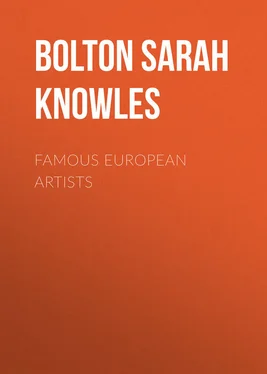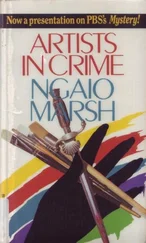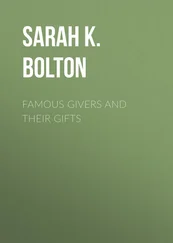Sarah Bolton - Famous European Artists
Здесь есть возможность читать онлайн «Sarah Bolton - Famous European Artists» — ознакомительный отрывок электронной книги совершенно бесплатно, а после прочтения отрывка купить полную версию. В некоторых случаях можно слушать аудио, скачать через торрент в формате fb2 и присутствует краткое содержание. ISBN: , Жанр: foreign_prose, foreign_antique, foreign_language, на английском языке. Описание произведения, (предисловие) а так же отзывы посетителей доступны на портале библиотеки ЛибКат.
- Название:Famous European Artists
- Автор:
- Жанр:
- Год:неизвестен
- ISBN:http://www.gutenberg.org/ebooks/39380
- Рейтинг книги:5 / 5. Голосов: 1
-
Избранное:Добавить в избранное
- Отзывы:
-
Ваша оценка:
- 100
- 1
- 2
- 3
- 4
- 5
Famous European Artists: краткое содержание, описание и аннотация
Предлагаем к чтению аннотацию, описание, краткое содержание или предисловие (зависит от того, что написал сам автор книги «Famous European Artists»). Если вы не нашли необходимую информацию о книге — напишите в комментариях, мы постараемся отыскать её.
Famous European Artists — читать онлайн ознакомительный отрывок
Ниже представлен текст книги, разбитый по страницам. Система сохранения места последней прочитанной страницы, позволяет с удобством читать онлайн бесплатно книгу «Famous European Artists», без необходимости каждый раз заново искать на чём Вы остановились. Поставьте закладку, и сможете в любой момент перейти на страницу, на которой закончили чтение.
Интервал:
Закладка:
The sculptor at once left the painting and started for Florence. But Julius sent after him, and gave him five hundred crowns to pacify him. It certainly would have been a pecuniary saving to the pontiff not to have given way to his temper and used his staff!
When half the ceiling was completed, at Julius's request the scaffolding was removed, and all Rome crowded to see the wonderful work on All Saints' Day, 1509.
Kugler says, "The ceiling of the Sistine Chapel contains the most perfect works done by Michael Angelo in his long and active life. Here his great spirit appears in its noblest dignity, in its highest purity; here the attention is not disturbed by that arbitrary display to which his great power not unfrequently seduced him in other works."
The paintings represent God the Father separating the light from the darkness; he creates the sun and moon; surrounded by angels, he commands the waters to bring forth all kinds of animals which can live in the sea; he breathes into man the breath of life; he forms Eve; both are driven from the garden; Abel is sacrificed; the flood comes; Noah and his family are saved in the ark.
Grimm thus describes a portion of this marvellous painting: "Adam lies on a dark mountain summit. His formation is finished; nothing more remains than that he should rise, and feel for the first time what life and waking are. It is as if the first emotion of his new condition thrilled through him; as if, still lying almost in a dream, he divined what was passing around him. God hovers slowly down over him from above, softly descending like an evening cloud. Angel forms surround him on all sides, closely thronging round him as if they were bearing him; and his mantle, as if swelled out by a full gust of wind, forms a flowing tent around them all. These angels are children in appearance, with lovely countenances: some support him from below, others look over his shoulder. More wonderful still than the mantle which embraces them all is the garment which covers the form of God himself, violet-gray drapery, transparent as if woven out of clouds, closely surrounding the mighty and beautiful form with its small folds, covering him entirely down to the knees, and yet allowing every muscle to appear through it. I have never seen the portrait of a human body which equalled the beauty of this. Cornelius justly said that since Phidias its like has not been formed…
"God commands and Adam obeys. He signs him to rise, and Adam seizes his hand to raise himself up. Like an electric touch, God sends a spark of his own spirit, with life-giving power, into Adam's body. Adam lay there powerless; the spirit moves within him; he raises his head to his Creator as a flower turns to the sun, impelled by that wonderful power which is neither will nor obedience…
"The next picture is the creation of Eve. Adam lies on his right side sunk in sleep, and completely turned to the spectator. One arm falls languidly on his breast, and the back of the fingers rest upon the ground… Eve stands behind Adam; we see her completely in profile… We feel tempted to say she is the most beautiful picture of a woman which art has produced… She is looking straight forward; and we feel that she breathes for the first time: but it seems as if life had not yet flowed through her veins, as if the adoring, God-turned position was not only the first dream-like movement, but as if the Creator himself had formed her, and called her from her slumber, in this position."
The pope was anxious to have the scaffolding again erected, and the figures touched with gold. "It is unnecessary," said Michael Angelo. "But it looks poor," said Julius, who should have thought of this before he insisted on its being shown to the public. "They are poor people whom I have painted there," said the artist; "they did not wear gold on their garments," and Julius was pacified.
Raphael was now working near Michael Angelo in the Vatican palace, but it is probable that they did not become friends, though each admired the genius of the other, and Raphael "thanked God that he had been born in the same century as Michael Angelo." But there was rivalry always between the followers of the two masters.
Raphael was gentle, affectionate, sympathetic, intense, lovable; Michael Angelo was tender at heart but austere in manner, doing only great works, and thinking great thoughts. "Raphael," says Grimm, "had one excellence, which, perhaps, as long as the world stands, no other artist has possessed to such an extent, – his works suit more closely the average human mind. There is no line drawn above or below. Michael Angelo's ideals belong to a nobler, stronger generation, as if he had had demigods in his mind, just as Schiller's poetical forms, in another manner, often outstep the measure of the ordinary mortal… Leonardo sought for the fantastic, Michael Angelo for the difficult and the great; both labored with intense accuracy, both went their own ways, and impressed the stamp of nature on their works. Raphael proceeded quietly, often advancing in the completion only to a certain point, at which he rested, apparently not jealous at being confounded with others. He paints at first in the fashion of Perugino, and his portraits are in the delicate manner of Leonardo: a certain grace is almost the only characteristic of his works. At length he finds himself in Rome, opposed alone to Michael Angelo; then only does the true source of power burst out within him; and he produces works which stand so high above all his former ones that the air of Rome which he breathed seemed to have worked wonders in him… Raphael served the court with agreeable obsequiousness; but under the outward veil of this subservient friendliness there dwelt a keen and royal mind, which bent before no power, and went its own way solitarily, like the soul of Michael Angelo."
The Sistine Chapel was finished, probably, in 1512, and Michael Angelo returned with ardor to the Julius monument, which, however, had been reduced in plan from the original. He worked on the central figure, Moses, with great joy, believing it would be his masterpiece. "This statue," says Charles Christopher Black of Trinity College, Cambridge, "takes rank with the Prometheus of Æschylus, with the highest and noblest conceptions of Dante and Shakespeare."
"He sits there," says Grimm, "as if on the point of starting up, his head proudly raised; his hand, under the arm of which rest the tables of the law, is thrust in his beard, which falls in heavy, waving locks on his breast; his nostrils are wide and expanding, and his mouth looks as if the words were trembling on his lips. Such a man could well subdue a rebellious people, drawing them after him, like a moving magnet, through the wilderness and through the sea itself.
"What need we information, letters, supposititious records, respecting Michael Angelo, when we possess such a work, every line of which is a transcript of his mind?"
Emerson truly said, "Nothing great was ever achieved without enthusiasm." No work either in literature or art can ever be great, or live beyond a decade or two, unless the author or artist puts himself into it, – his own glowing heart and earnest purpose. Mr. Black well says, "The highest aim of art is not to produce a counterpart of nature, but to convey by a judicious employment of natural forms, and a wise deviation where required, the sentiment which it is the artist's object to inculcate."
The statues of the two chained youths, or "Fettered Slaves," which were too large after the monument had been reduced in size, were sent to France. The "Dying Slave" will be recalled by all who have visited the Renaissance sculptures of the Louvre. Grimm says, "Perhaps the tender beauty of this dying youth is more penetrating than the power of Moses… When I say that to me it is the most elevated piece of statuary that I know, I do so remembering the masterpieces of ancient art. Man is always limited. It is impossible, in the most comprehensive life, to have had everything before our eyes, and to have contemplated that which we have seen, in the best and worthiest state of feeling… I ask myself what work of sculpture first comes to mind if I am to name the best, and at once the answer is ready, – the dying youth of Michael Angelo… What work of any ancient master do we, however, know or possess which touches us so nearly as this, – which takes hold of our soul so completely as this exemplification of the highest and last human conflict does, in a being just developing? The last moment, between life and immortality, – the terror at once of departing and arriving, – the enfeebling of the powerful youthful limbs, which, like an empty and magnificent coat of mail, are cast off by the soul as she rises, and which, still losing what they contained, seem nevertheless completely to veil it!
Читать дальшеИнтервал:
Закладка:
Похожие книги на «Famous European Artists»
Представляем Вашему вниманию похожие книги на «Famous European Artists» списком для выбора. Мы отобрали схожую по названию и смыслу литературу в надежде предоставить читателям больше вариантов отыскать новые, интересные, ещё непрочитанные произведения.
Обсуждение, отзывы о книге «Famous European Artists» и просто собственные мнения читателей. Оставьте ваши комментарии, напишите, что Вы думаете о произведении, его смысле или главных героях. Укажите что конкретно понравилось, а что нет, и почему Вы так считаете.












